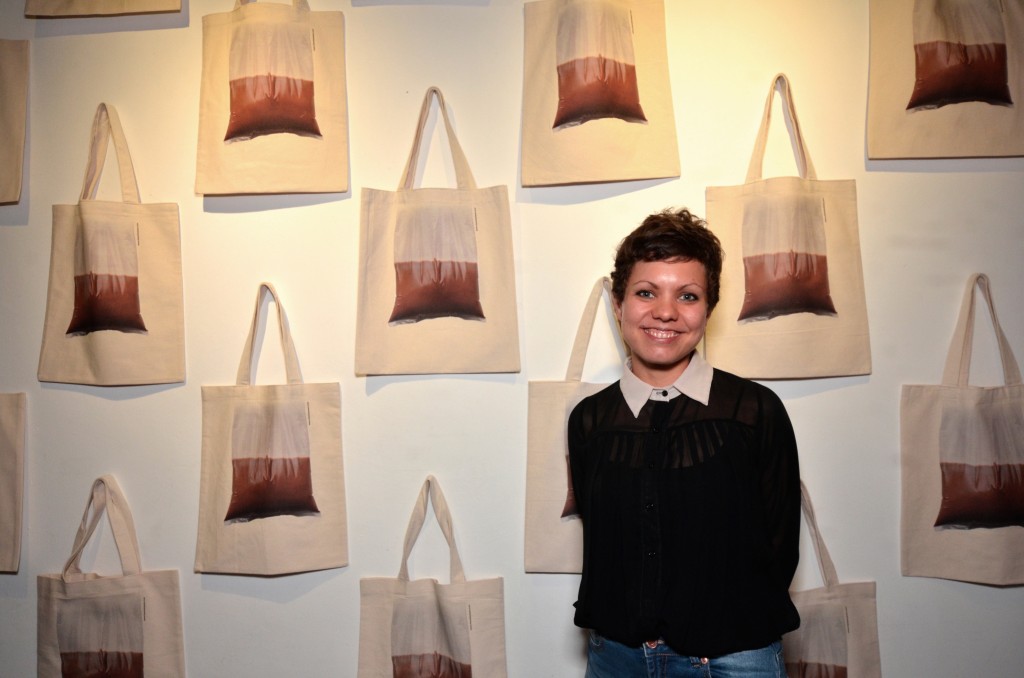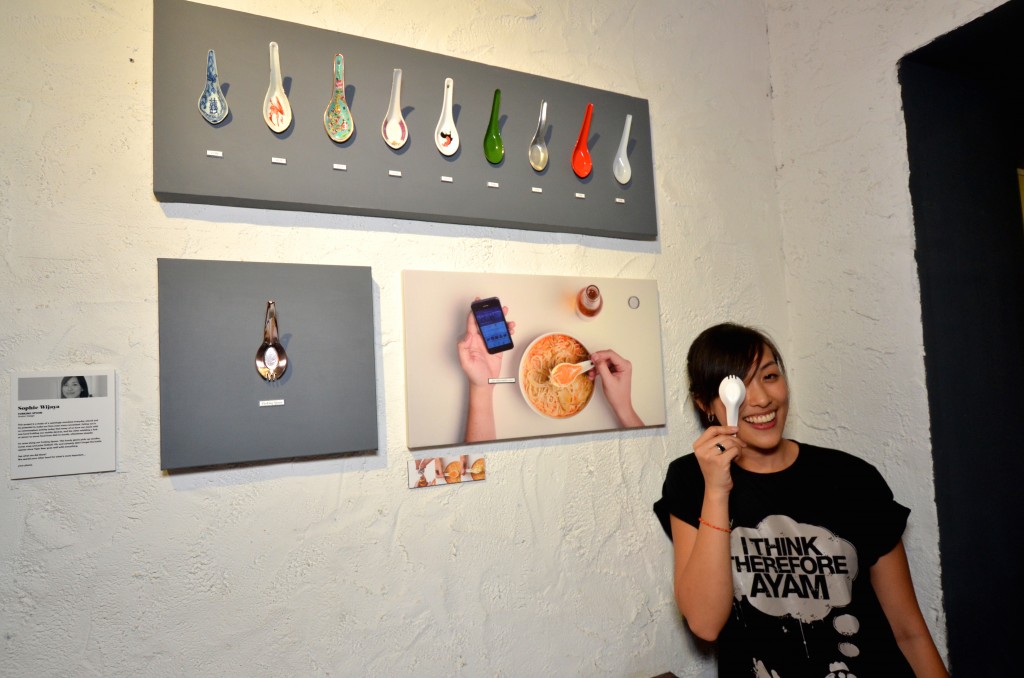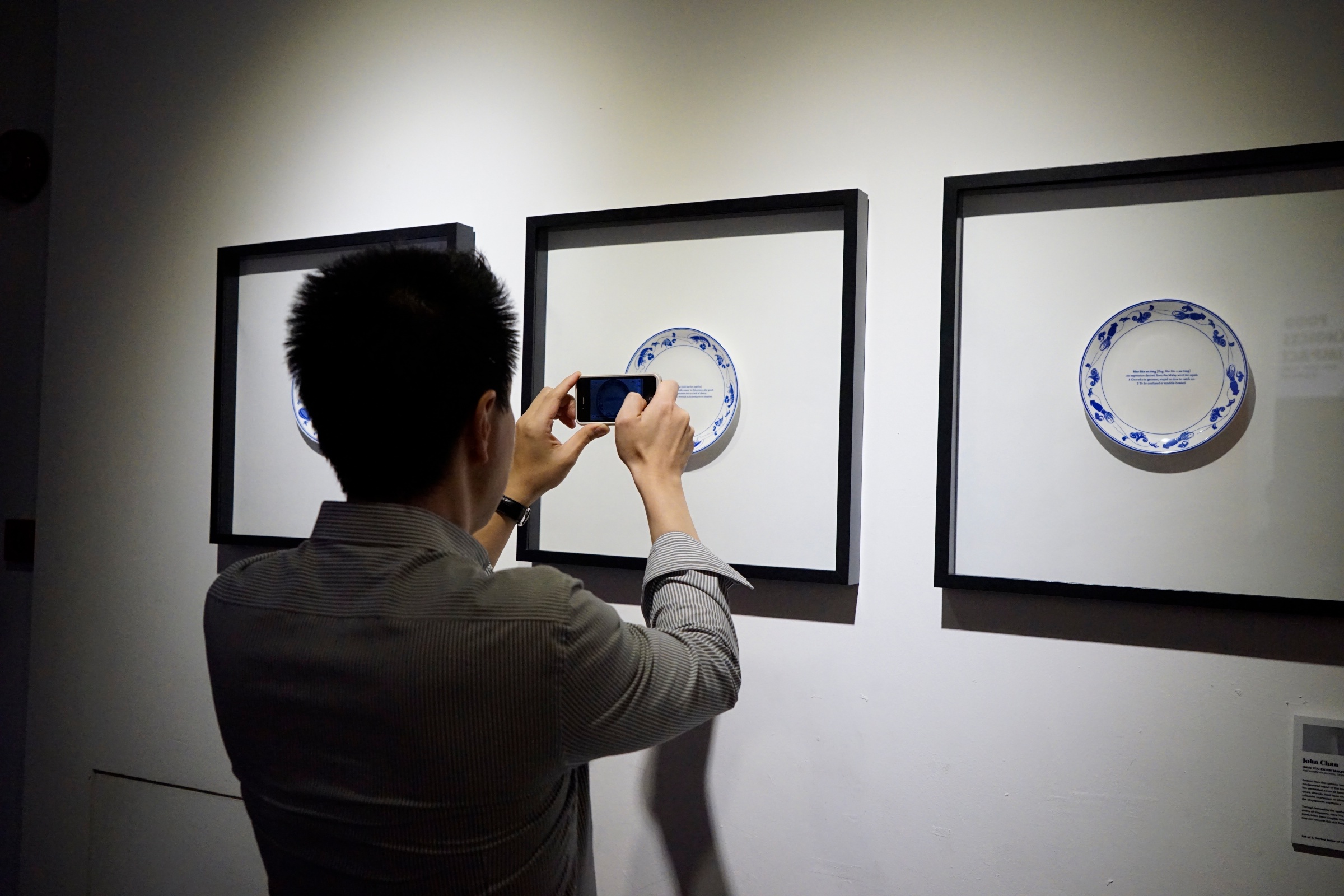British-born, Singapore-based artist Ann Healey’s parting wish for Singapore in a recent interview was that she wanted to see “more Singaporeans translate their love of food to their love of art”.
As if answering her call with a spoonful of coincidence, design company Chemistry brought together their team to flex their creative skills to put some thought into Singapore’s food culture through art and design for the exhibition, Makan Matters: Exploring Singapore Food Culture.
Some stand-out works – from a reimagined, globalised futuristic teh tarik pot disguised as a Nespresso machine, to a noodle bowl reminding us of food wastage – are a blend of thought-provoking questions on our relationship to food and a light-hearted take on Singapore’s food culture.
But beyond art, the team also reimagined everyday items, such as Singapore’s kopi bag as a tote bag, and our centuries’ old Chinese soup spoon as a “forking spoon” (a spork, really).

Distraction and a pinch of culture shock inspired Austrian designer and illustrator Karin Aue to create an anamorphic design of the ubiquitous coffee plastic bag as a tote bag.
“The first time I came to Singapore four years ago, the kopi bag was one of the things that distracted me. I was like, ‘What? You drink coffee out of a bag? So strange,'” said Aue.
“And yeah, four years later, I basically pick one up every morning since I live in Little India, so now im like absolute fan of the kopi bag.”
A disdain for having her white shirts and T-shirts stained spurred graphic and product designer Sophie Wijaya to rethink and redesign the age-old Chinese soup spoon.
“The idea comes from the dish that I really love – laksa. But the problem about eating laksa is that you can never go eat it in your white T-shirt. Because whatever you do, you’ll always have these splatters,” said the American-born Chinese designer who grew up in Indonesia and attended school in Singapore and California.
“The Peranakan spoons each took so much time to make, some of them are painted so intricately back in their day. There was so much effort to what food meant to them.”Sophie Wijaya

Her design not only reimagines the ergonomics of the spoon, but also its functionality in a changing socio-economic environment, where the mobile phone has become a permanent feature at the dining table.
Wijaya’s research into the history of the spoon’s design showed her a time when design, art and functionality merged seamlessly. And almost ironically, today’s designs have lost most of that. So Wijaya set out to answer this through her Forking Spoon piece, and to take into account the multi-tasking that takes place at eating tables.
“The Peranakan spoons each took so much time to make, some of them are painted so intricately back in their day. There was so much effort to what food meant to them.
“And then there’s this one point where it has became very industrial, where it doesn’t fit into your mouth, and it hurts your mouth. Or sometimes when you slide it out it cuts your lips.
“And it makes you wonder what happened to all those years of evolution. Progress should have made it better, but no. People want eat with one hand because one hand is going to be on their phone while they watch TV. I’m not trying to inject sadness in my piece but it’s a fact that you have to think of as a designer.”
– Additional reporting by Joyce Ng
Makan Matters: Exploring Singapore Food Culture is on from now till 25 May at Artistry, 17 Jalan Pinang, Singapore 199149. Admission is free.


